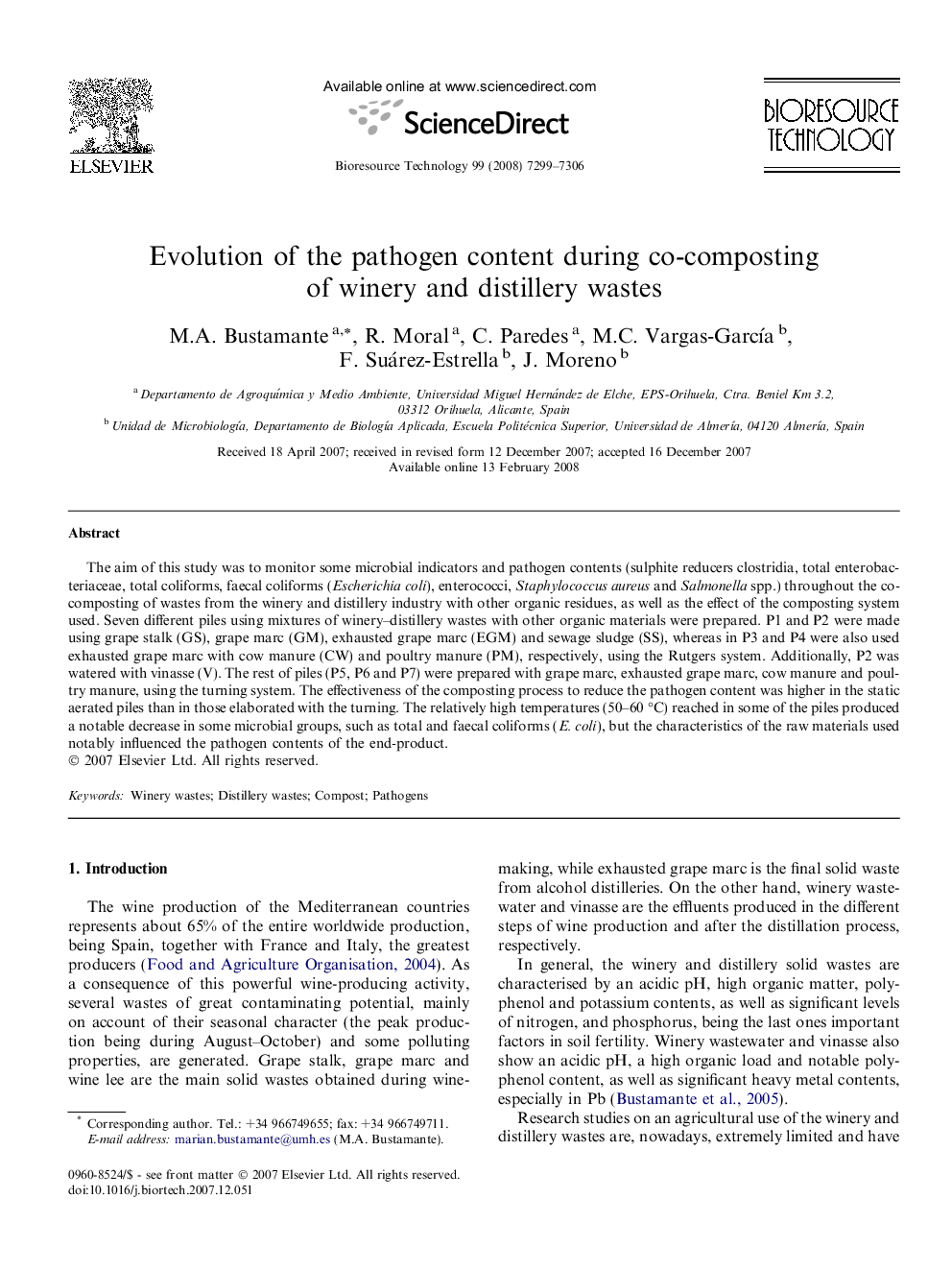| Article ID | Journal | Published Year | Pages | File Type |
|---|---|---|---|---|
| 685318 | Bioresource Technology | 2008 | 8 Pages |
The aim of this study was to monitor some microbial indicators and pathogen contents (sulphite reducers clostridia, total enterobacteriaceae, total coliforms, faecal coliforms (Escherichia coli), enterococci, Staphylococcus aureus and Salmonella spp.) throughout the co-composting of wastes from the winery and distillery industry with other organic residues, as well as the effect of the composting system used. Seven different piles using mixtures of winery–distillery wastes with other organic materials were prepared. P1 and P2 were made using grape stalk (GS), grape marc (GM), exhausted grape marc (EGM) and sewage sludge (SS), whereas in P3 and P4 were also used exhausted grape marc with cow manure (CW) and poultry manure (PM), respectively, using the Rutgers system. Additionally, P2 was watered with vinasse (V). The rest of piles (P5, P6 and P7) were prepared with grape marc, exhausted grape marc, cow manure and poultry manure, using the turning system. The effectiveness of the composting process to reduce the pathogen content was higher in the static aerated piles than in those elaborated with the turning. The relatively high temperatures (50–60 °C) reached in some of the piles produced a notable decrease in some microbial groups, such as total and faecal coliforms (E. coli), but the characteristics of the raw materials used notably influenced the pathogen contents of the end-product.
